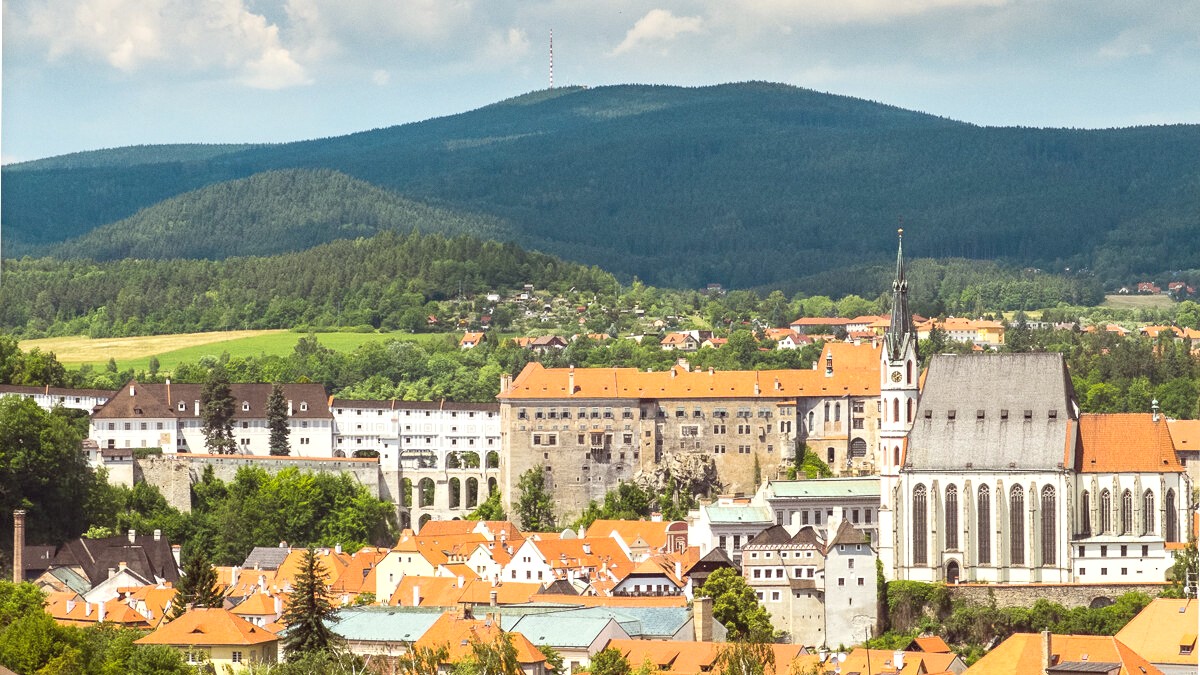
Czech Republic
Czech cuisine features a focus on meat, root vegetables, potatoes, and rich, flavorful sauces. Its culinary traditions carry strong influences from neighboring countries, notably Germany, Austria, and Hungary.
Historically, the food was conceived to be filling and calorically dense, fitting the needs of manual laborers, especially miners.
Pork, beef, and chicken are staples. Duck is also popular, especially during holidays or for special meals.
Dumplings (knedlíky) are a cornerstone, appearing in both bread-based (houskové knedlíky) and potato-based (bramborové knedlíky) varieties. Potatoes and rice also feature prominently.
Cabbage, often prepared as sauerkraut (zelí), carrots, parsley root, onions, and garlic are common. Paprika, caraway seeds, marjoram, and dill are frequently used.
Marinated beef sirloin in a creamy vegetable sauce. Typically with bread dumplings (houskové knedlíky), a slice of lemon, and cranberry sauce.
Considered a national dish and a top recommendation.
A rich stew, usually made with beef or pork, seasoned generously with paprika. Often served with bread or potato dumplings.
Perfect for soaking up the flavorful sauce.
A classic comfort food combining roast pork with bread or potato dumplings and stewed sauerkraut.
Hearty and satisfying.
Fruit dumplings, often made with plums or apricots. Boiled and served with melted butter, sugar, and sometimes quark cheese.
Palačinky are Czech crepes, typically filled with jam or fresh fruit and whipped cream. Koláče are sweet pastry cakes, often baked with various fillings.
Kutná Hora focuses more on traditional, hearty cuisine. You will not find many high-end restaurants comparable to those in Prague.
Numerous mid-range options are present in the historic center, serving traditional Czech food in comfortable settings.
Small cafes and bakeries have pastries, sandwiches, and light meals that are budget-friendly.
International cuisine options are limited in Kutná Hora.
You might find a pizzeria or a small Asian restaurant.
The dining focus remains strongly on Czech cuisine.
For diverse international food, Prague has many more choices.
Kutná Hora does not have large food markets.
Unlike bigger cities, large food halls are not here.
Surrounding agricultural areas are mainly for commercial farming.
For a true market experience, consider visiting Prague.
Awareness of gluten-free and other allergen-aware dining is growing in the Czech Republic, but is not as prevalent as in Western Europe.
Many traditional dishes, especially those with dumplings or thickened sauces, contain gluten.
It is advisable to carry an "allergy card" translated into Czech to clearly explain your dietary needs to restaurant staff. Printable cards exist online.
Ask about ingredients, especially in sauces and soups. Focus on naturally gluten-free foods like grilled meats, potatoes, and salads.
Translation Apps: Use Google Translate or DeepL to communicate your dietary needs to restaurant staff.
Always clearly communicate your dietary needs. Double-check for hidden ingredients, especially in sauces and soups.
Structured cooking classes are not commonly available in Kutná Hora itself.
Structured food tours are not commonly available directly in Kutná Hora.
No specific opportunities for tourists to visit farms or food producers are readily available in Kutná Hora.
Dive into traditional Czech dishes for a truly authentic dining experience.
The local cuisine is hearty and flavorful.
Pair your meals with local Czech beer, which is celebrated worldwide.
It is an integral part of the dining culture.
Kutná Hora's culinary scene focuses on genuine Czech tradition, reflecting its history and local preferences.
While mostly classic Czech, certain regional hints in cuisine exist across the country, though less pronounced here.
Expect mid-range and budget-friendly traditional eateries, with fewer fine dining or international options than larger cities.
While Kutná Hora delivers a focus on its rich historical and architectural sites, the culinary scene has a genuine taste of Czech tradition.